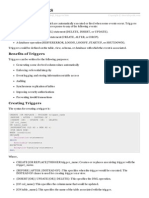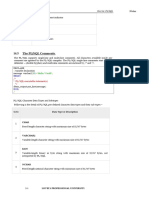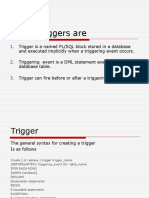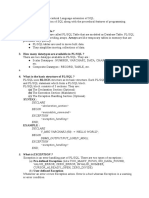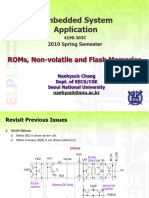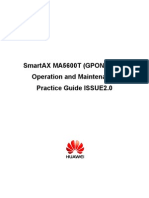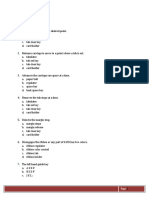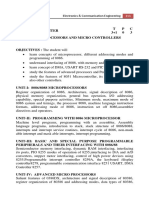0% found this document useful (0 votes)
24 views3 pagesPL-SQL Triggers
The document discusses triggers in PL/SQL programs. It defines triggers, describes the different types of triggers and their uses. It also provides the syntax for creating triggers and an example trigger that logs salary changes in an employee table.
Uploaded by
walterharveldwhiteCopyright
© © All Rights Reserved
We take content rights seriously. If you suspect this is your content, claim it here.
Available Formats
Download as DOCX, PDF, TXT or read online on Scribd
0% found this document useful (0 votes)
24 views3 pagesPL-SQL Triggers
The document discusses triggers in PL/SQL programs. It defines triggers, describes the different types of triggers and their uses. It also provides the syntax for creating triggers and an example trigger that logs salary changes in an employee table.
Uploaded by
walterharveldwhiteCopyright
© © All Rights Reserved
We take content rights seriously. If you suspect this is your content, claim it here.
Available Formats
Download as DOCX, PDF, TXT or read online on Scribd
/ 3

























